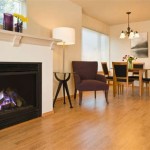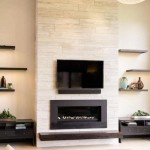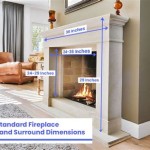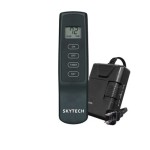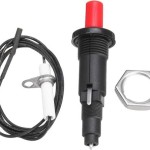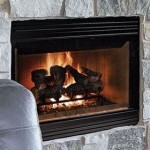Gas Log Fireplace Insert With Blower: Enhancing Efficiency and Comfort
A gas log fireplace insert with a blower is a popular choice for homeowners seeking to upgrade their existing wood-burning fireplaces. These inserts offer a convenient and efficient heating solution, providing the ambiance of a traditional fireplace without the mess and effort associated with burning real wood. The addition of a blower further enhances the insert's heating capabilities, distributing warm air more effectively throughout the living space.
This article delves into the features, benefits, installation considerations, operational aspects, and maintenance requirements of gas log fireplace inserts equipped with blowers, offering a comprehensive understanding of this heating appliance.
Understanding Gas Log Fireplace Inserts
A gas log fireplace insert is a self-contained unit designed to be installed within an existing masonry or factory-built fireplace. It typically consists of a set of realistic-looking ceramic or refractory logs, a burner system fueled by natural gas or propane, and a control valve to regulate the flame height and heat output. These inserts offer a cleaner and more convenient alternative to traditional wood-burning fireplaces, eliminating the need for wood storage, hauling, splitting, and ash removal.
Gas log inserts are available in various sizes and styles to fit different fireplace openings and aesthetic preferences. Some models feature remote controls, allowing users to adjust the flame and temperature from the comfort of their couch. The efficiency of a gas log insert is typically measured by its AFUE (Annual Fuel Utilization Efficiency) rating, which indicates the percentage of fuel that is converted into usable heat. Higher AFUE ratings signify greater energy efficiency and lower operating costs.
The primary function of a gas log fireplace insert is to provide supplemental heating for a specific room or area. While they can contribute significantly to overall home heating, they are generally not intended as a primary heat source, particularly in colder climates. Their appeal lies in their ability to create a cozy and inviting atmosphere while efficiently warming the surrounding space.
The Role of the Blower in Heat Distribution
The blower, also known as a fan, is an integral component of many gas log fireplace inserts. Its purpose is to circulate the heated air that is generated by the burner system. Without a blower, the heat produced by the insert tends to rise immediately to the ceiling, creating uneven temperature distribution within the room. This results in a concentration of heat near the fireplace and a cooler environment in other areas.
The blower draws cooler air from the bottom of the fireplace insert, passes it over the heated firebox, and then forces the warmed air back into the room through vents located on the front of the unit. This forced-air circulation helps to distribute the heat more evenly throughout the space, increasing the overall comfort and efficiency of the insert. The blower's speed is often adjustable, allowing users to customize the airflow according to their preferences and the room's heating requirements.
The effectiveness of a blower is dependent on its size, power, and design. Larger blowers generally produce more airflow and can distribute heat over a wider area. Some blowers are equipped with automatic controls that adjust the fan speed based on the firebox temperature, ensuring optimal performance and preventing overheating. The noise level of the blower is also a consideration, as some models can be louder than others. It is important to select a blower that provides adequate airflow without generating excessive noise.
Advantages of Using a Gas Log Fireplace Insert With Blower
There are several compelling reasons why homeowners choose gas log fireplace inserts with blowers. These benefits span convenience, efficiency, and improved air quality compared to traditional wood-burning fireplaces.
Convenience and Ease of Use: Gas log inserts offer unparalleled convenience. There's no need to chop, stack, or carry wood. Starting a fire is as simple as turning a knob or pressing a button on a remote control. Cleaning up is also effortless, as there is no ash to dispose of. This makes gas log inserts an ideal choice for individuals who value ease of use and low maintenance.
Improved Heating Efficiency: The addition of a blower significantly enhances the heating efficiency of a gas log insert. By circulating the heated air, the blower ensures that the heat is distributed evenly throughout the room, eliminating hot spots and cold areas. This allows the insert to warm the space more effectively and efficiently, potentially reducing heating costs.
Enhanced Safety and Air Quality: Gas log inserts are generally safer and cleaner than traditional wood-burning fireplaces. They eliminate the risks associated with sparks, embers, and creosote buildup, which can lead to chimney fires. Additionally, gas log inserts produce fewer harmful emissions, contributing to improved air quality both inside and outside the home. This makes them a more environmentally friendly option than wood-burning fireplaces.
Installation Considerations for Gas Log Inserts
The installation of a gas log fireplace insert is a complex process that should be performed by a qualified and licensed technician. Proper installation is crucial for ensuring the safe and efficient operation of the appliance. Several factors must be considered during the installation process, including the existing fireplace structure, gas line availability, and venting requirements.
Before installing a gas log insert, it is essential to have the existing fireplace and chimney inspected by a professional. The chimney must be in good condition and free from any obstructions or cracks. If the chimney is damaged, it may need to be repaired or relined to ensure proper venting. The fireplace opening must also be of the appropriate size and configuration to accommodate the chosen insert model.
A gas line must be installed to provide fuel to the insert. The gas line should be installed by a qualified plumber and must meet all local codes and regulations. The insert must also be properly vented to the outside to ensure that combustion gases are safely expelled. The venting system should be installed according to the manufacturer's instructions and should be inspected regularly to ensure that it is functioning correctly.
Electrical connections are necessary for the blower to operate. A dedicated electrical circuit may be required, and the wiring must be performed by a qualified electrician. All electrical connections should be made in accordance with local electrical codes. After the installation is complete, the technician should thoroughly test the insert to ensure that it is working properly and that all safety features are functioning correctly.
Operational Aspects and Safety Precautions
Operating a gas log fireplace insert with a blower is relatively straightforward, but it is essential to follow safety precautions to prevent accidents and ensure the appliance's longevity. Users should familiarize themselves with the manufacturer's instructions and guidelines before operating the insert for the first time.
The insert is typically ignited using an igniter switch or a remote control. The flame height can be adjusted using a control valve, allowing users to control the heat output. The blower speed can also be adjusted to optimize heat distribution. It is important to avoid operating the insert at excessively high flame settings for prolonged periods, as this can lead to overheating and damage to the appliance.
Never place flammable materials, such as curtains, furniture, or clothing, near the fireplace insert. Keep a safe distance from the fireplace when it is in operation to avoid burns. It is also important to ensure that the area around the fireplace is well-ventilated to prevent the buildup of carbon monoxide. Install carbon monoxide detectors in the home and test them regularly to ensure they are functioning correctly.
Regularly inspect the insert and its components for any signs of damage or wear. If any problems are detected, such as gas leaks or unusual noises, immediately turn off the insert and contact a qualified service technician. Never attempt to repair the insert yourself, as this can be dangerous.
Maintenance and Care of Gas Log Fireplace Inserts
Proper maintenance is essential for ensuring the long-term performance and safety of a gas log fireplace insert. Regular cleaning and inspection can help prevent problems and extend the lifespan of the appliance.
At least once a year, the insert should be inspected and cleaned by a qualified service technician. The technician will inspect the burner system, gas lines, venting system, and blower for any signs of damage or wear. The logs should be cleaned to remove any soot or debris that may have accumulated. The vents should also be cleaned to ensure proper airflow.
The blower motor may require occasional lubrication to ensure smooth operation. Consult the manufacturer's instructions for specific lubrication recommendations. The pilot light should be checked regularly and cleaned if necessary. A dirty pilot light can cause the insert to malfunction or fail to ignite.
It is also important to periodically clean the glass front of the insert to remove any soot or smudges. Use a non-abrasive cleaner specifically designed for fireplace glass. Never use harsh chemicals or abrasive materials, as these can damage the glass. Following these maintenance practices will contribute to the efficient and safe operation of the gas log fireplace insert.

35 Ruby Traditional Intellifire Touch Direct Vent Fireplace Insert Blower And Remote Electronic Ignition Majestic

30 Ruby Contemporary Intellifire Touch Direct Vent Fireplace Insert Blower And Remote Electronic Ignition Majestic

Chaska 34l Gas Fireplace Insert With Blower Log Glass Rock

Gas Fireplace Inserts Fireplacesdirect Com

Pleasant Hearth Universal Circulating Zero Clearance 42 In Ventless Dual Fuel Fireplace Insert Phzc42c The Home Depot

25 Ruby Traditional Intellifire Touch Direct Vent Fireplace Insert Blower And Remote Electronic Ignition Majestic

T25i Timberwolf Wood Fireplace Insert Hearth Stove Patio

Wood Fireplace Inserts With Blowers Upgrade Your
.aspx?strip=all)
Top 11 Gas Fireplace Insert Trends Of 2024

Inserts Wood Osburn 2200 Insert With Blower Ob02201
Related Posts

